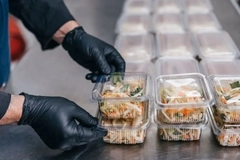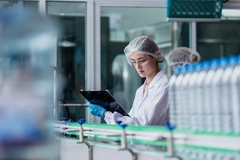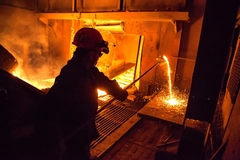Reusable packaging scrutinized: Huhtamaki and Stora Enso welcome science supporting single-use fiber fast food model

19 Jan 2021 --- Huhtamaki and Stora Enso are welcoming new scientific evidence finding paper-based single-use products more environmentally responsible than reusable tableware in European quickservice restaurants.
The Life Cycle Assessment (LCA) conducted by Ramboll and released by the European Paper Packaging Association (EPPA) suggests these advantages are primarily driven by the carbon emissions related to the amount of energy required to wash the tableware and freshwater used in the washing process in a multi-use system.
For climate change, the single-use model generates significant benefits. In the baseline scenario, the polypropylene-based multi-use system was responsible for generating 2.7 times more carbon dioxide equivalent emissions than the paper-based single-use system.
In addition to climate impact and freshwater consumption, the LCA study measured environmental impact in fossil depletion, particle pollution, terrestrial acidification, freshwater eutrophication, ionizing radiation, metal depletion and stratospheric ozone depletion.
Further categories where single-use packaging provided environmental advantages compared to a multi-use system were fossil depletion, particle pollution and terrestrial acidification.
Wasted water?
The single main contributor to climate change impact in the multi-use baseline scenario is the washing process’ electricity demand. Overall, the use phase accounts for 83 percent of the total aggregated impact.
 Stora Enso says the LCA challenges the general assumption of reuse being more environmentally beneficial than single-use.For freshwater consumption, there are also significant environmental benefits to the single-use model. The multi-use system used 3.6 times the amount of freshwater in the baseline scenario.
Stora Enso says the LCA challenges the general assumption of reuse being more environmentally beneficial than single-use.For freshwater consumption, there are also significant environmental benefits to the single-use model. The multi-use system used 3.6 times the amount of freshwater in the baseline scenario.
“Water stress is also an issue of growing global importance, with an increasing number of geographies facing freshwater supply issues today,” explains Thomasine Kamerling, executive vice president sustainability and communications.
“Therefore, it is of the utmost importance policy decisions adopted today take into account both carbon emissions and freshwater consumption and all industries and sectors review how they can mitigate their impact.”
“At Huhtamaki, we are actively working to minimize our carbon footprint, setting a Science Based Target, and we are currently assessing water management plans across all our operations.”
“We believe that investments in waste management infrastructure are needed to increase further the recycling rates of paper-based packaging, which will further reduce their climate impact,” adds Charles Héaulmé, president and CEO of Huhtamaki.
Challenging reuse assumptions
Stora Enso says the LCA challenges the general assumption of reuse being more environmentally beneficial than single-use. The EU Waste Framework Directive sets out five steps for dealing with waste, and the model assumes reuse should be preferred over recycling.
Last year, a multi-university study found reusable “sharing” tableware could reduce takeout packaging waste in China by up to 92 percent, equating to higher waste and emissions reductions than paper alternatives.
Stora Enso adds that the EU expects the Member States to encourage the options delivering the best overall environmental outcome. In the light of this guidance and with scientific evidence from the recent LCA, the use of single-use food packaging in quick-service restaurants is the better option, the supplier insists.
LCA is the widely acknowledged way to assess the environmental impact of packaging when moving toward the carbon neutrality goal of the European Green Deal in 2050. This European LCA was certified by TÜV, a leading testing service provider. The single main contributor to climate change impact in the multi-use baseline scenario is the washing process’ electricity demand.
The single main contributor to climate change impact in the multi-use baseline scenario is the washing process’ electricity demand.
Stora Enso describes the European fiber-based single-use system as characterized by large, industrialized operators with continuous environmental systems and development roadmaps in place, allowing for a coordinated approach.
In September, the company announced an investment to increase formed fiber capacity at its Hylte Mill, Sweden and Qian’an Mill, China, as demand for single-use plastics gathers pace.
Reuse or recycle?
Fast food giants are exploring both single-use fiber packaging models and reuse systems. In January, Yum China launched a series of plastic reduction and eco-friendly packaging initiatives across brands including KFC and Pizza Hut in line with China’s latest sustainability regulations.
The initiatives include replacing existing plastic packaging with paper straws, paper bags, and biodegradable plastic bags.
Yum China is anticipating a reduction of approximately 8,000 tons of non-degradable plastics annually starting from 2021 through these actions.
Also, KFC China rolled out reusable serving baskets in 2019, saving more than 2,000 tons of paper packaging and reducing restaurant waste in 2019 by approximately 20 percent.
 Pizza Hut’s paper-based packaging in China.Similar to KFC China’s reusable serving baskets, McDonald’s is testing a new reusable cup model for hot beverages in partnership with TerraCycle’s zero-waste packaging platform, Loop.
Pizza Hut’s paper-based packaging in China.Similar to KFC China’s reusable serving baskets, McDonald’s is testing a new reusable cup model for hot beverages in partnership with TerraCycle’s zero-waste packaging platform, Loop.
The initiative is initially trialing in 2021 across select UK McDonald’s restaurants, allowing customers to reduce waste by choosing a durable Loop cup for a small deposit.
The deposit can be redeemed by returning the cup to participating McDonald’s restaurants, where it is safely washed and reused.
Meanwhile, Burger King is also working with Loop by offering restaurant guests the option to order brand staples like the Whopper sandwich, soft drinks or coffee in reusable sandwich containers or beverage cups.
Starting in 2021, select Burger King restaurants in the US cities of New York City and Portland, and Tokyo, Japan, are among the first to implement the model. More cities are expected to be added in the coming months.
As with the McDonald’s project, participating Burger King restaurants will feature a collection system encouraging guests to return the packaging for cleaning and reuse.
Those who opt for the reusable packaging are charged a deposit at the time of purchase and receive a refund when the packaging is returned.
However, Huhtamaki CEO Héaulmé remains unconvinced by reuse systems. “The environmental impact of energy and water required for washing in a multi-use system demonstrates that reusable packaging is not the solution for the foodservice industry.”
“Particularly from a climate change perspective, paper-based single-use packaging results in a lower environmental impact. Ramboll’s LCA provides scientific evidence which policymakers must welcome as they aim to develop regulation that is good for the planet and has no unintended consequences,” he concludes.
By Joshua Poole











